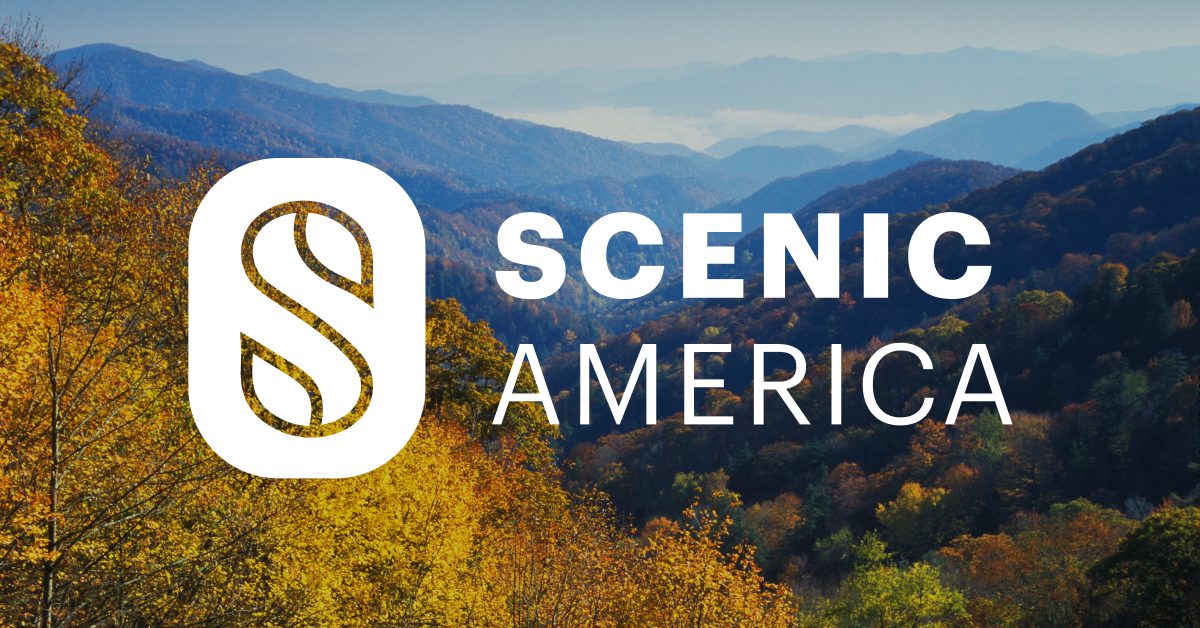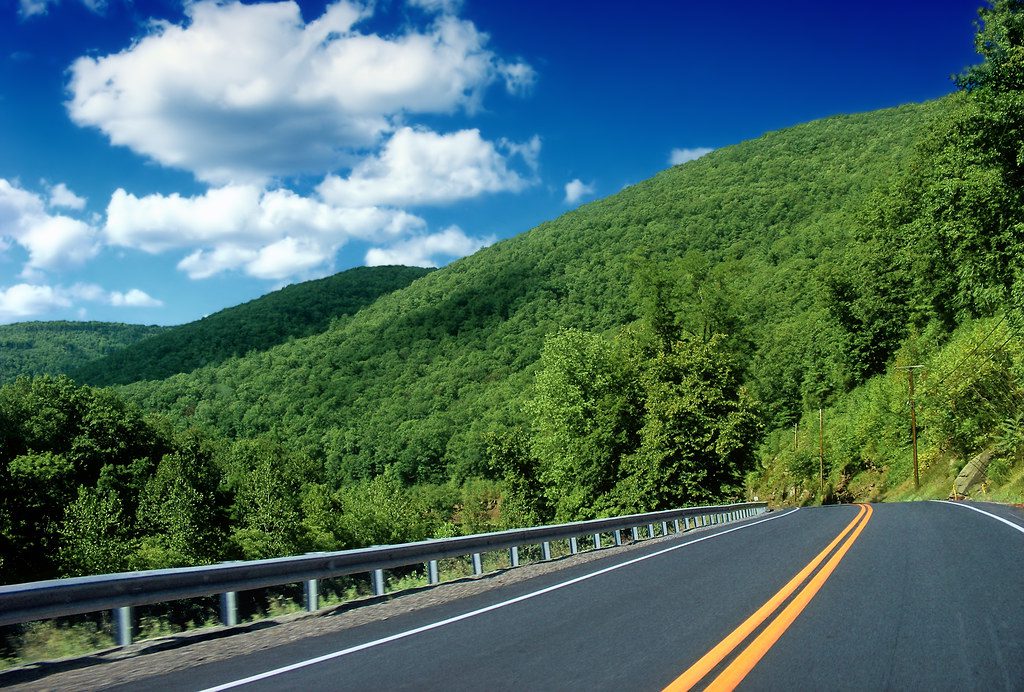A Threat to Byways: Segmentation
To ensure their scenic integrity, federal regulations prohibit the construction of new billboards on designated scenic byways. However, the billboard industry often advocates for “segmentation,” a policy that excludes commercial and industrial areas from scenic byway designations. Under segmentation, an otherwise scenic drive would be interrupted by billboards and signage. The billboard industry may continue to construct new signage along this stretch of roadway, using this policy to get around the federal restriction.

Scenic byway programs are aimed at identifying, protecting, and promoting our most scenic roads. Continuity is extremely important. Excluding sections of the road undermines the visitor’s journey and undercuts community efforts to improve the whole scenic road, not just parts of it.
Permitting parts of the road to be excluded from designation poses a serious threat to the scenic integrity of designated byways.
Excluding portions of byways from designation not only exposes them to unchecked billboard proliferation but is likely to encourage further visual degradation along the roadway, marring the landscape for both residents and visitors alike. Parts of scenic byways that do not contribute to the overall byway should be enhanced over time so that they, too, contribute to a continuous scenic byway.
States are free to establish stricter requirements for continuous designation of a scenic byway than the minimum standards that FHWA has set and should be encouraged to do so.
The Federal Highway Administration (FHWA) National Scenic Byways Interim Policy states that continuity is an important criterion for both national scenic byways and All-American Roads. According to the FHWA:
Neither should have too many gaps but rather should be as continuous as possible and should minimize intrusion on the visitor’s experience.
The FHWA’s provisions also ban new nonconforming outdoor advertising signs (including billboards) on scenic byways along the Interstate System or federal-aid primary system. Scenic byway leaders may face billboard industry pressure to “segment” and remove portions of a designated route to allow billboards. The FHWA expects state and local leaders to make assessments of any proposed segmentation, identifying significant resources or intrinsic qualities along these segments and the degree to which a gap disrupts continuity and degrades the overall visitor experience.

Segmentation is an invention of the billboard industry. It was devised as a legislative scheme to permit the intrusion of billboards on scenic byways by amending the Highway Beautification Act.
There is no reason to allow billboards along a scenic byway—they only detract from its intrinsic qualities. The loss of a continuous route diminishes the entire byway and disrupts the experience of traveling through the entirety of a scenically managed route. The general issue is that all scenic assets within a scenic corridor are protected by the scenic byway designation, and any portion removed from that designation becomes vulnerable. This can have significant immediate impacts, as projects along a segmented portion lose their eligibility for National Scenic Byways Program funds.
The FHWA allows and encourages directional signs for travelers to the scenic byway beyond the gap, though, obviously, the gap itself can no longer be signed as part of the scenic byway. Furthermore, if a route becomes highly segmented, it can violate the byway corridor management plan to the extent that it no longer applies to the roadway. It is possible that a scenic byway could be de-designated due to diminished continuity and compromised intrinsic qualities.
What Can We Do About It
Scenic America believes that Congress should repeal the opportunity for segmentation from the Highway Beautification Act and the FHWA should strengthen its policy, which currently only discourages segmentation. By using visual resource tools, we can assess the impacts of the degradation of scenic byways due to segmentation and the intrusion of all forms of outdoor advertising.
Latest Byways News
-
 Pennsylvania Route 6 earns scenic byway designationPA Route 6 is now Pennsylvania’s newest scenic byway, recognizing the corridor’s iconic landscapes, small towns, and…
Pennsylvania Route 6 earns scenic byway designationPA Route 6 is now Pennsylvania’s newest scenic byway, recognizing the corridor’s iconic landscapes, small towns, and… -
 California designates State Route 247 as its newest scenic bywayCaltrans designated State Route 247 as a scenic byway, protecting its iconic high‑desert landscapes from visual…
California designates State Route 247 as its newest scenic bywayCaltrans designated State Route 247 as a scenic byway, protecting its iconic high‑desert landscapes from visual… -
 Representatives Pappas and Bresnahan Rally Support for $65 Million in…Scenic America applauds a new bipartisan letter in the U.S. House of Representatives calling for…
Representatives Pappas and Bresnahan Rally Support for $65 Million in…Scenic America applauds a new bipartisan letter in the U.S. House of Representatives calling for… -
 Stop the Madness: Pennsylvania Route 6 Triumphs in Byways Madness…After weeks of voting and thousands of ballots cast, Pennsylvania Route 6 has emerged as…
Stop the Madness: Pennsylvania Route 6 Triumphs in Byways Madness…After weeks of voting and thousands of ballots cast, Pennsylvania Route 6 has emerged as…